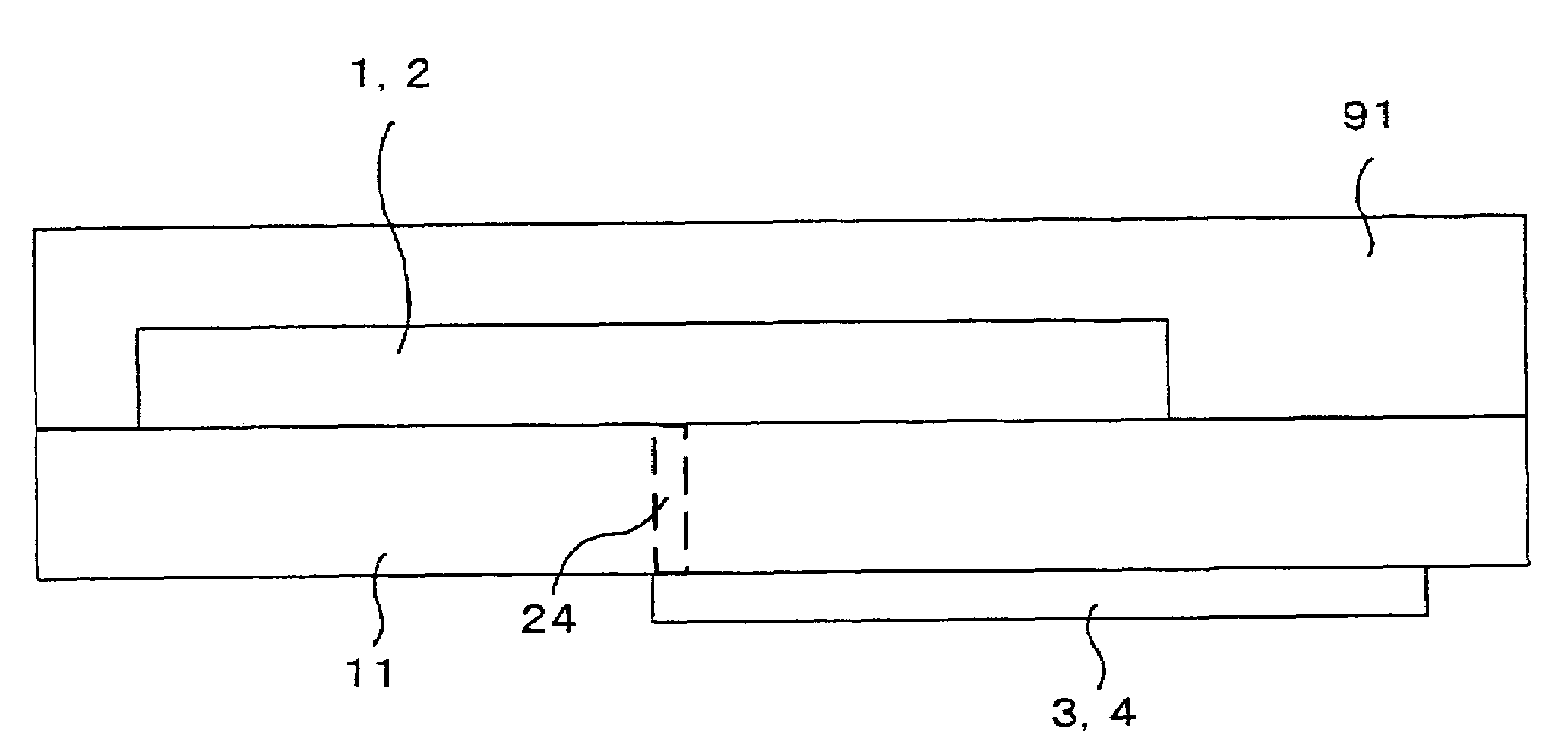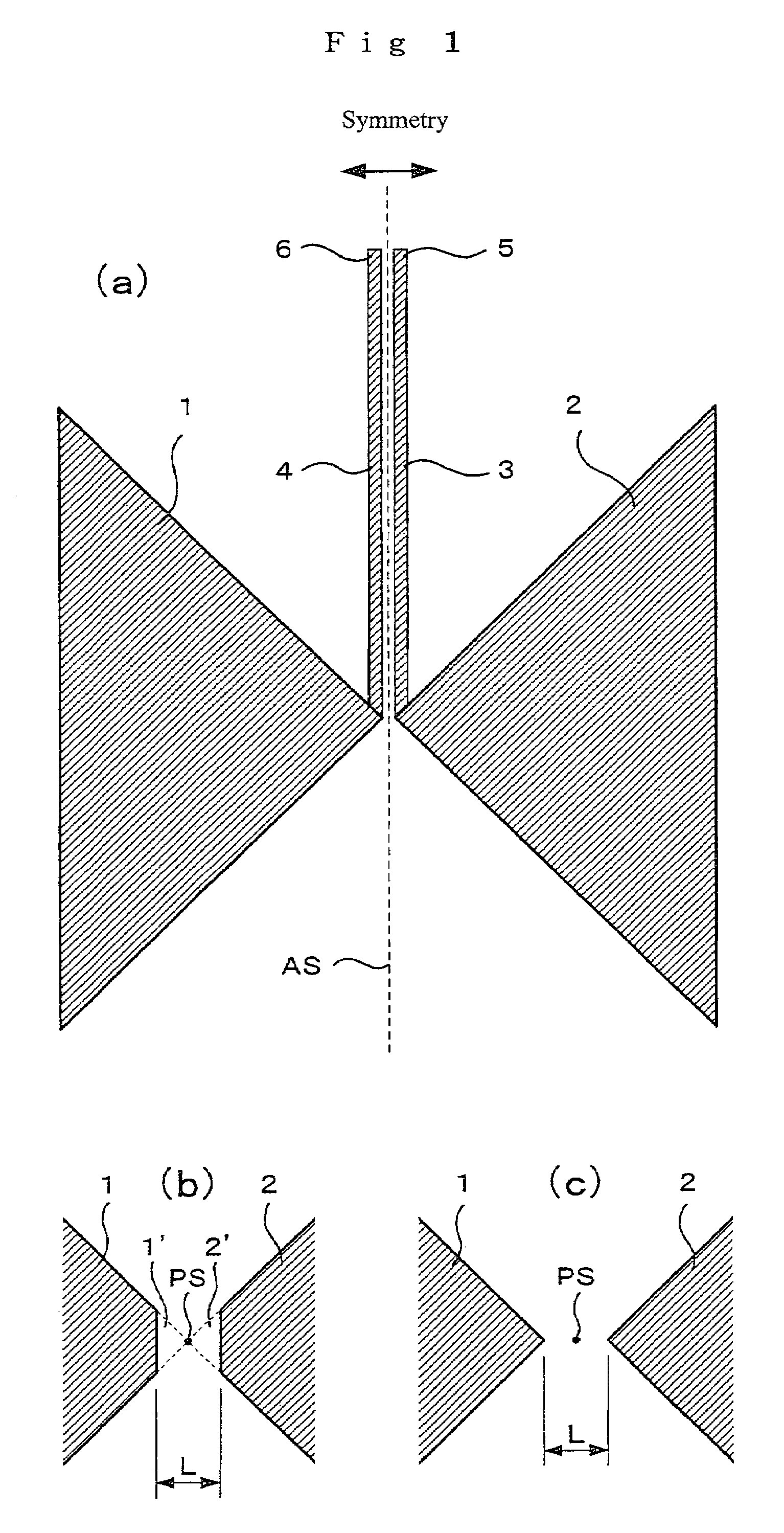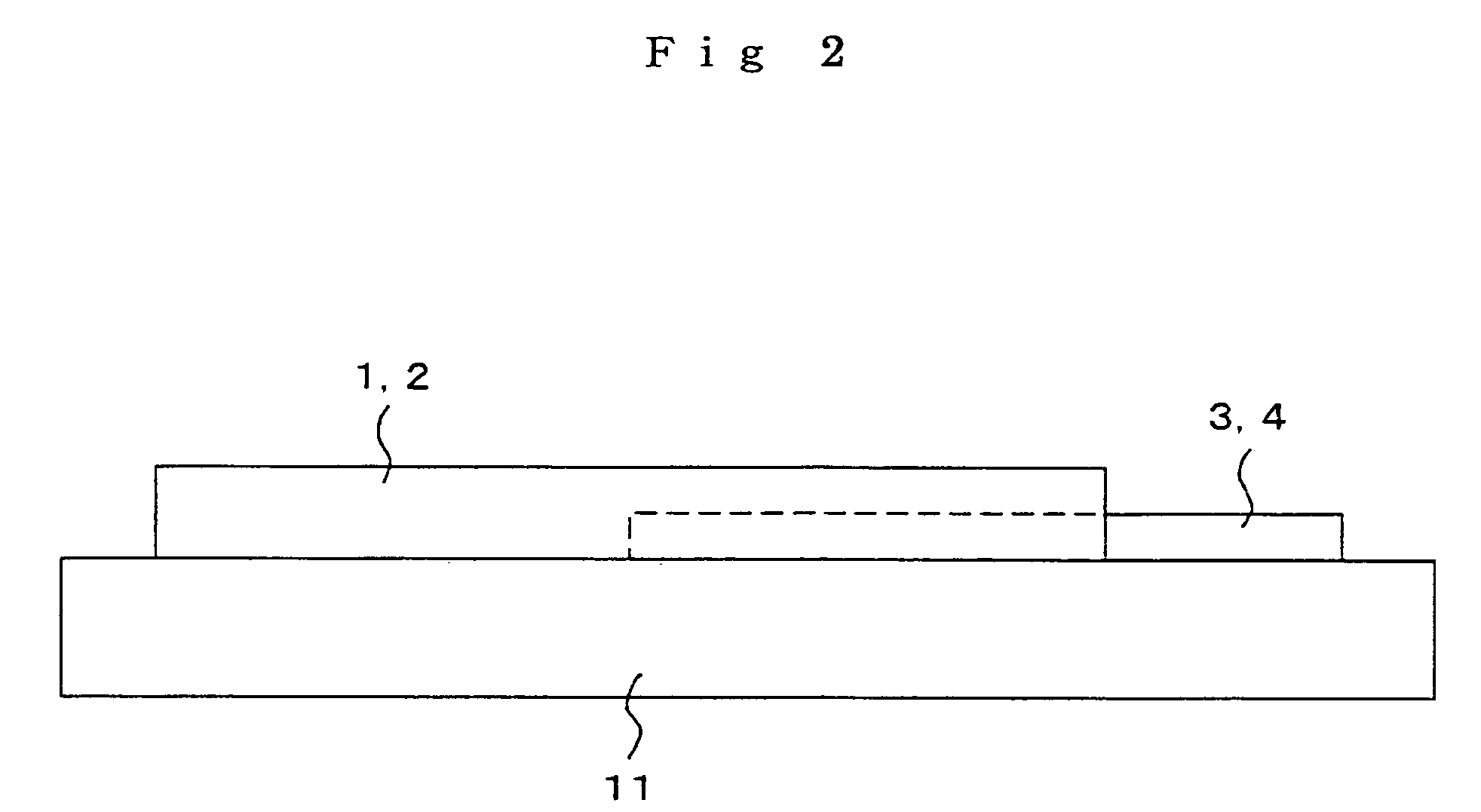Ultra-wideband antenna and ultrahigh frequency circuit module
a wideband antenna and ultrahigh frequency circuit technology, applied in waveguide devices, resonant antennas, protective material radiating elements, etc., can solve the problems of inability to achieve input impedance matching of antennas and hammering wideband characteristics, and achieve the effect of high frequency circuits and low reflection loss
- Summary
- Abstract
- Description
- Claims
- Application Information
AI Technical Summary
Benefits of technology
Problems solved by technology
Method used
Image
Examples
embodiment 1
[0042]An antenna relating to embodiment 1 of the invention will now be described with reference to the drawings. FIG. 1(a) is a plan view of an antenna module relating to embodiment 1 of the invention. Reference numerals 1, 2 are antenna conductors constituting the antenna, and 3, 4 are feed conductors connected to respective one ends of the antenna conductors 1, 2. 5, 6 are ends of the feed conductors 3, 4 at an opposite side to the antenna conductors 1, 2. Signals that are 180 degrees out of phase with each other are fed from these sections 5, 6. The antenna conductors 1, 2 and the feed conductors 3, 4 are line symmetrical about an axis of symmetry AS.
[0043]FIG. 1(b) is an expanded drawing of a central part of the antenna. FIG. 1(c) shows another variation of the central part of the antenna. In FIG. 1(b) and FIG. 1(c), the feed conductors 3, 4 are omitted. A point of symmetry PS exists between the antenna conductors 1 and 2, with the antenna conductors 1 being 2 rotationally symme...
embodiment 2
[0061]With embodiment 1 of the present invention, a dielectric substrate is provided on one surface of the antenna conductor, but it is also possible to provide a dielectric substrate on both surfaces. Examples of embodiment 2 of the present invention are shown in FIG. 9 and FIG. 10. In these drawings, the same reference numerals are attached to sections that are the same as or correspond to those in the above-described embodiment.
[0062]FIG. 9 is a plan view of an antenna module relating to embodiment 2 of the invention. The feed conductors 3, 4 are provided on a rear surface on the dielectric substrate. As a result, via-holes 24, 24 are provided in order to connect the antenna conductors 1, 2 and the feed conductors 3, 4. Signals that are 180 degrees out of phase with each other are fed from sections 5, 6.
[0063]FIG. 10 is a right side view of an antenna module relating to embodiment 2 of the invention. Reference numeral 91 is a second dielectric substrate provided on the antenna co...
embodiment 3
[0068]It is possible to endow the feed conductors with a impedance conversion function. Examples of embodiment 3 of the present invention are shown in FIG. 12. FIG. 12 is a plan view of an antenna module relating to embodiment 3 of the invention. In this drawing, the same reference numerals are attached to sections that are the same as or correspond to those in the above-described embodiment.
[0069]In FIG. 12, reference numerals 37 and 38 are antenna conductor 1, 2 side ends of the feed conductors 3, 4, and the feed conductors 3, 4, are electrically connected to the antenna conductors 1, 2 at these sections. The antenna conductors 1, 2 and the feed conductors 3, 4 are symmetrical about a plane of symmetry, signals that are 180 degrees out of phase are fed from ends 5, 6 of the feed conductors opposite to the antenna, and this point is the same as for the case of embodiment 1 of the invention.
[0070]In embodiment 3 of the invention, if the width of the end 5 of the feed conductor 3 is ...
PUM
 Login to View More
Login to View More Abstract
Description
Claims
Application Information
 Login to View More
Login to View More - R&D
- Intellectual Property
- Life Sciences
- Materials
- Tech Scout
- Unparalleled Data Quality
- Higher Quality Content
- 60% Fewer Hallucinations
Browse by: Latest US Patents, China's latest patents, Technical Efficacy Thesaurus, Application Domain, Technology Topic, Popular Technical Reports.
© 2025 PatSnap. All rights reserved.Legal|Privacy policy|Modern Slavery Act Transparency Statement|Sitemap|About US| Contact US: help@patsnap.com



